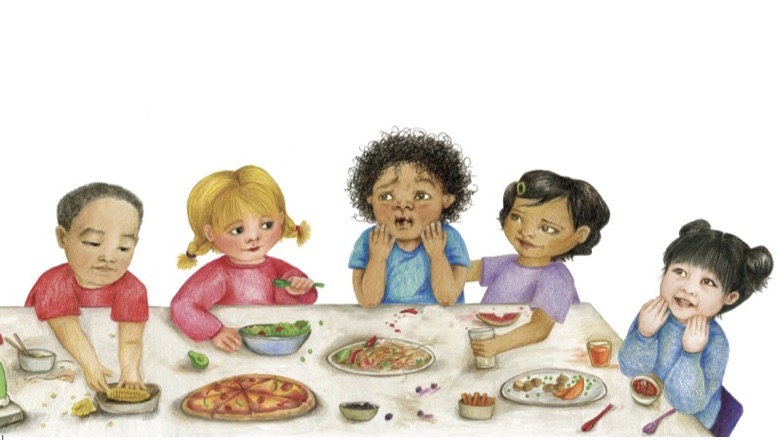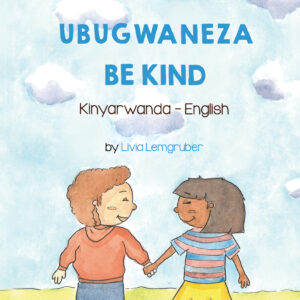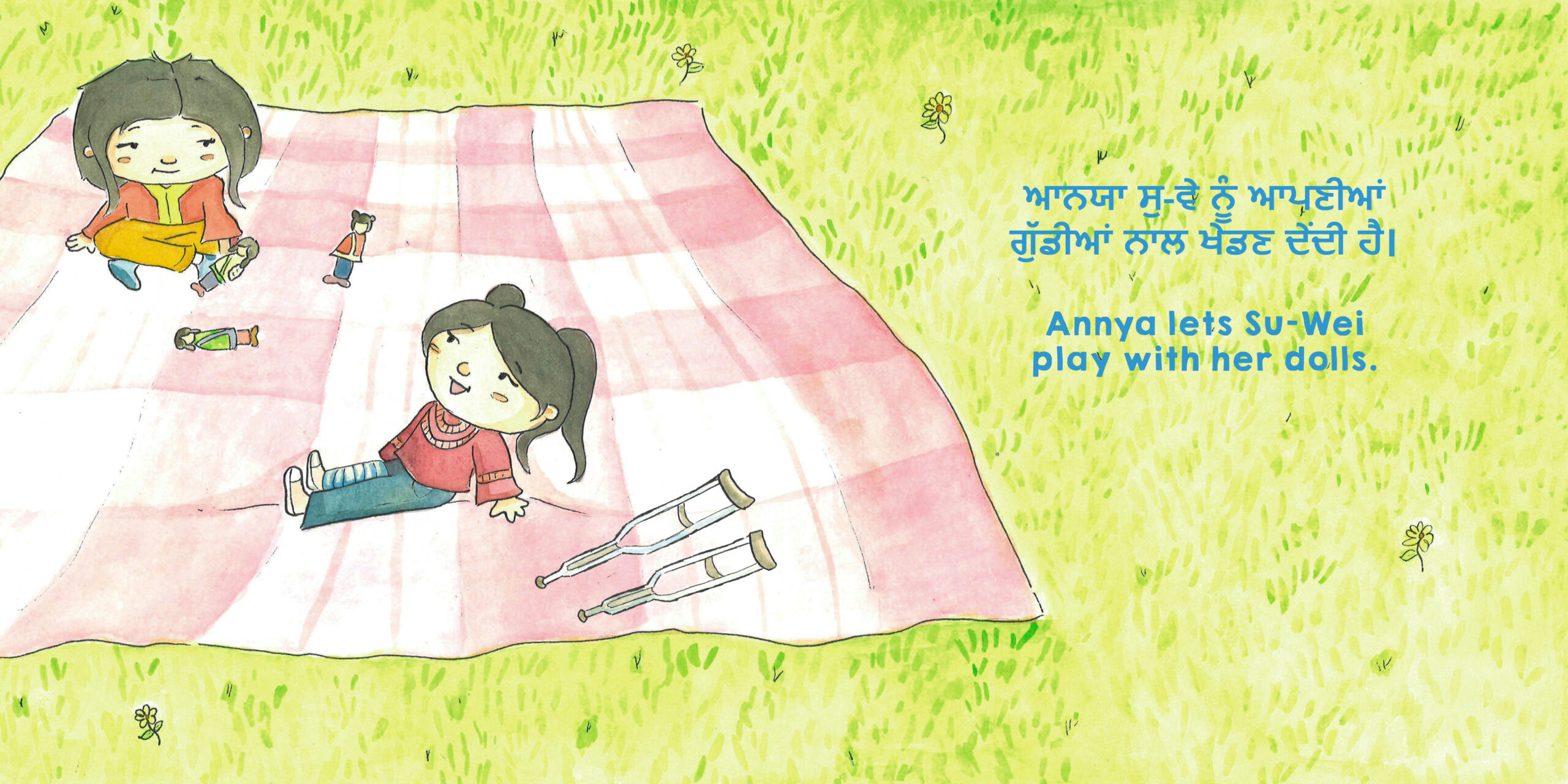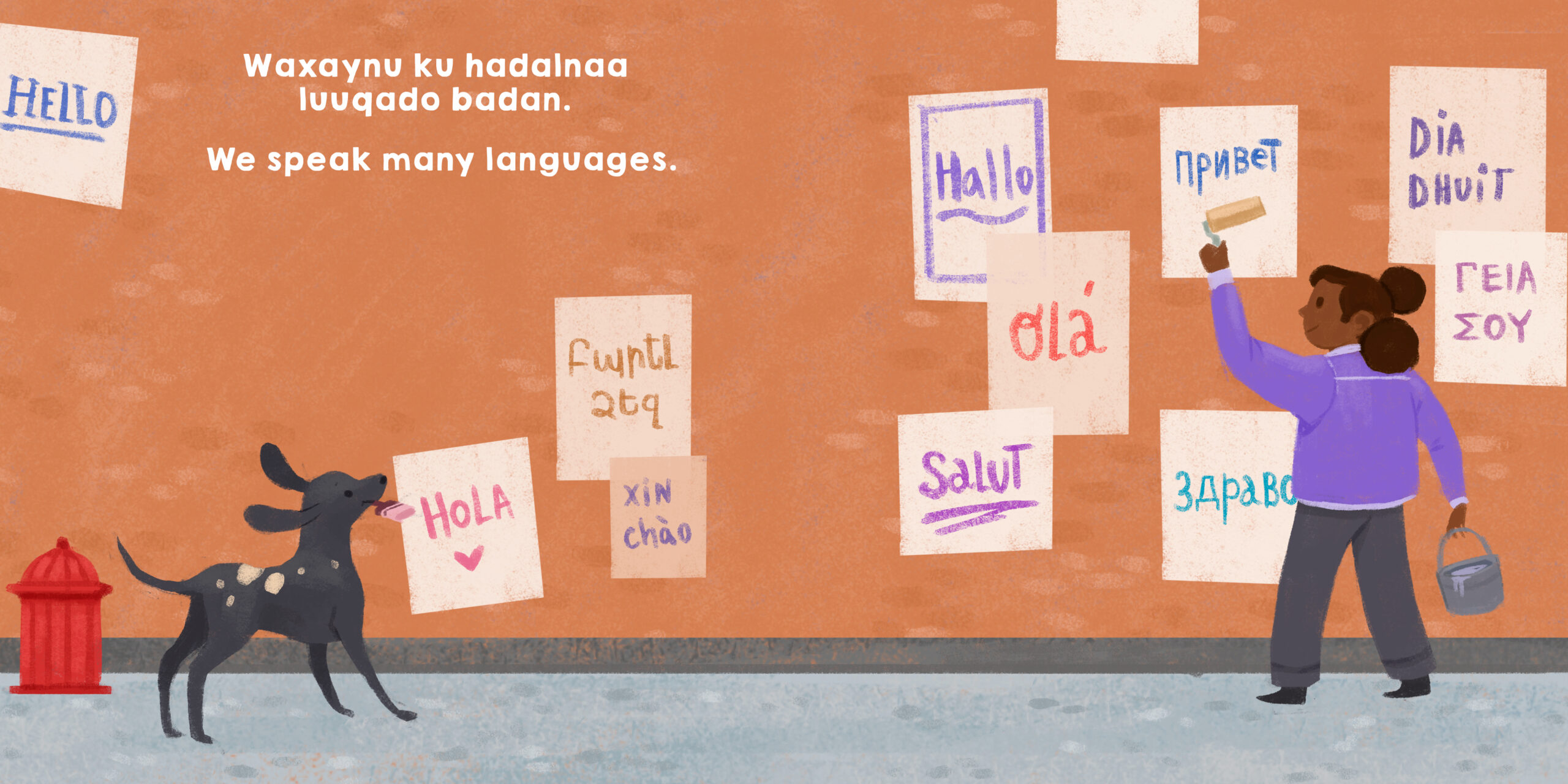
Food, Food, Fabulous Food by Kate Clynes, illustrated by MW
Autumn is the season of giving thanks and being grateful. Whether celebrating Thanksgiving in the United States or Labor Thanksgiving Day in Japan, the idea is the same. It’s a festive time rooted in history to bring people together to give thanks and be grateful. And, since gratitude and kindness go hand in hand, it’s no coincidence that World Kindness Day falls in November as well.

One of the best ways to practice gratitude is by doing simple acts of kindness for others. It heightens one’s sense of good fortune and creates and enhances social connections. Showing gratitude and kindness also benefit one’s mental and physical health. However, it’s not always easy, and it takes practice. By starting the practice young, kindness can become a wonderful habit. Here are 10 easy ways to practice kindness and gratitude this season:
Acts of Kindness
1. Leave notes around the classroom with kind sayings for classmates to find at random. The notes can be simple with messages such as “You Got This” or “You Are Enough.” In bilingual classrooms, consider having students write the messages in two languages!
2. Become a volunteer. Easy ways to volunteer include making homemade decorations for a senior center or collecting canned goods for a local food drive. Whatever the cause, volunteering not only feels good, but it’s an incredible way to show kindness to others.
3. Incorporate kindness into the classroom fabric. Make it an integral part of the classroom by weaving it into all subject areas. For example, sing songs about kindness in music class, develop a list of kindness synonyms in language arts or create a link between kindness and the environment for science class. For more ideas, visit Language Lizard’s Be Kind lesson plan here.
4. Create a kindness wall with kindness bricks. When a student does something kind, a teacher can recognize the act by adding a brick to the wall. The wall highlights the variety of ways students can express kindness throughout the day.
Be Kind by Livia Lemgruber
5. Unsurprisingly, there are over 20 “holidays” to promote kindness. In addition to World Kindness Day, the other holidays include Random Acts of Kindness Day, National Do Something Nice Day, and National Compliment Day, among others. Take time to acknowledge and celebrate these days in the classroom. It’s as simple as starting the day with proverbs about kindness from around the world. Then, read multicultural books about gratitude and kindness, such as Be Kind, which shows the many ways to help others with simple acts of kindness.

Express Gratitude
6. Learn to say “Thank You” in different languages. Research how to say “thank you” in multiple languages or have students share how they say “thank you” in their language. Discuss how different cultures express their thanks. This activity is a great way to expose children to other languages and cultures!

Who Are We? by Anneke Forzani, illustrated by Maria Russo
7. Create a Gratitude Wall or Thankful Tree where students write something they are thankful for and post it for everyone else to see. Younger students can draw pictures of things for which they are grateful. Reading other people’s happy thoughts has a calming effect and allows kids to see how much there is to be thankful for on any given day.
8. Have students spend a few minutes at the end of the day writing in a Gratitude Journal. Provide a simple prompt such as “three things you are thankful for,” which allows the children to express themselves in a fun and creative way.
“I am grateful for what I am and have. My thanksgiving is perpetual.” Henry David Thoreau
9. Write a thank you note to someone who you would like to thank for having helped you (a friend or family member), inspired you (a teacher or leader), or because you’re thankful for what they do for the community (first responders). The point is to express gratitude with the added benefit of brightening the recipient’s day.
10. Pay it forward. Paying it forward means that when someone does something for you, you pass on kindness and gratitude to another person instead of paying that person back directly. It can be as simple as holding the door open for someone, paying a compliment, or sharing a book. Paying it forward makes people feel good, appreciated, and memorable.
Visit our blog post for more ideas on how to teach thankfulness in the classroom.
